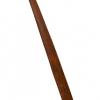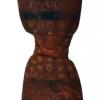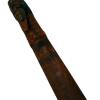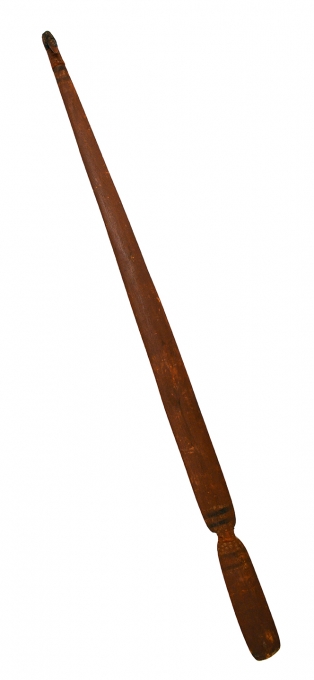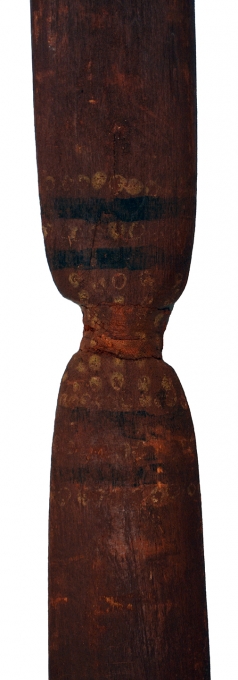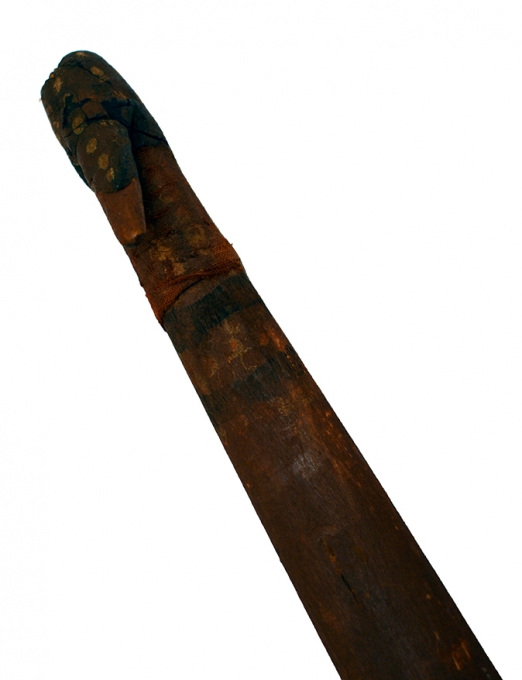Everyday Aboriginal life provides the opportunity for numerous objects (baskets and trays, weapons, musical instruments) to combine cultural and aesthetic dimensions. This encounter is essentially due to the fact that many everyday objects also play a role in ceremonies in honour of the Dreamtime, and that this religious function implies a significant artistic re-elaboration: paintings, engravings and sculptures adorn and sacralise them. What is obvious in the case of the tiwi funerary poles or the totem poles of Arnhem Land, which are used for religious purposes from the outset, takes on greater significance in the case of artefacts that are primarily utilitarian. This is particularly true of weapons (maces, boomerangs, spears, spear-throwers), whose function as fishing, hunting and/or warrior instruments is recuperated in a religious context, where mythical battles are (re)enacted, magical anticipation of the favourable outcome of a clan battle or the hunt for game is used, and the object becomes a 'totemic' object of veneration. The woomerah is a thruster used to amplify the throwing force of a spear. Thrusters are generally elongated and can be engraved with Dreamtime motifs or simply polished. In the central and southern regions of Australia, the beaks extend from the body; those in the north generally have a perpendicular beak like this one dating from the second half of the 20th century. At one end is a handle for holding the object. At the other end, the spear rests on a notch in the shape of a wooden beak, sometimes made from wallaby shinbone. The various parts of the woomerah can be fixed with spinifex resin (a desert cactus) or beeswax. Symbols are painted on the woomerah, corresponding to clan motifs, showing both their membership of a clan and their representation of that clan during religious ceremonies.
ANONYME
Spear Thruster , c.1950
Art : Aboriginal
Origine : Autres / Others
Dimensions : 5,5 x 92 x 2 cm
Medium : Wood
Price : Nous contacter / contact us
N° : 4334
